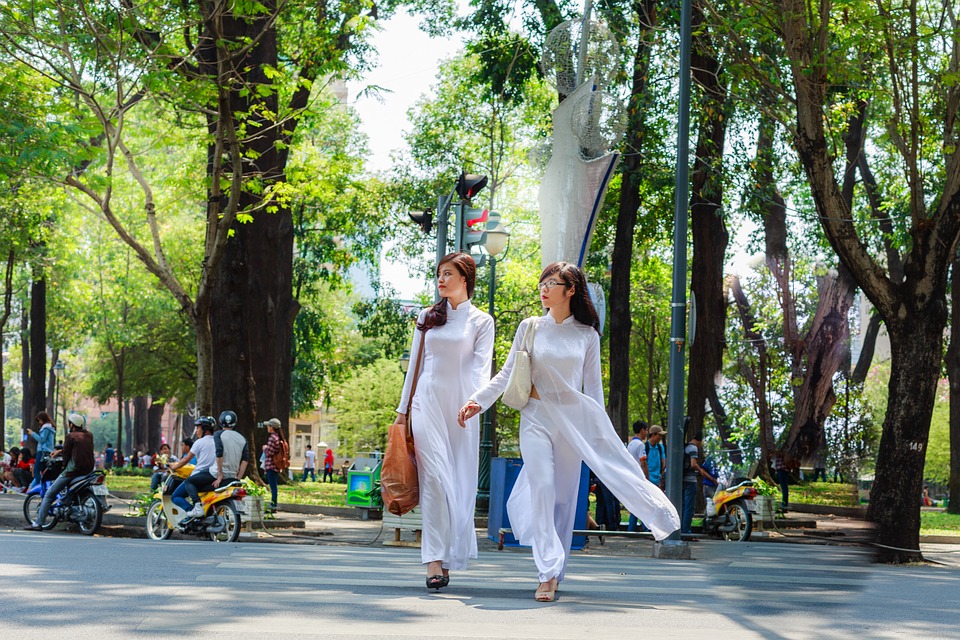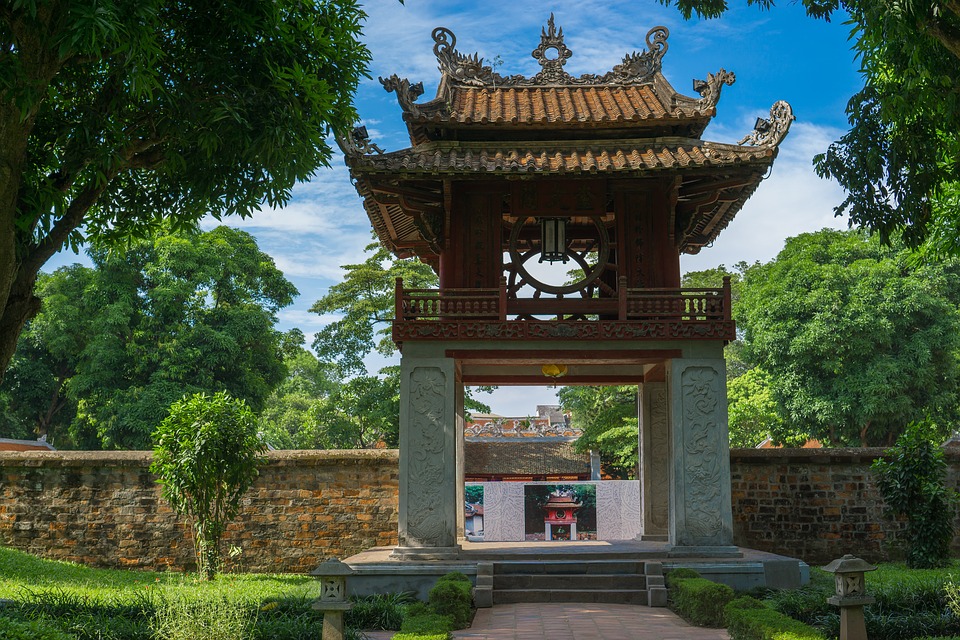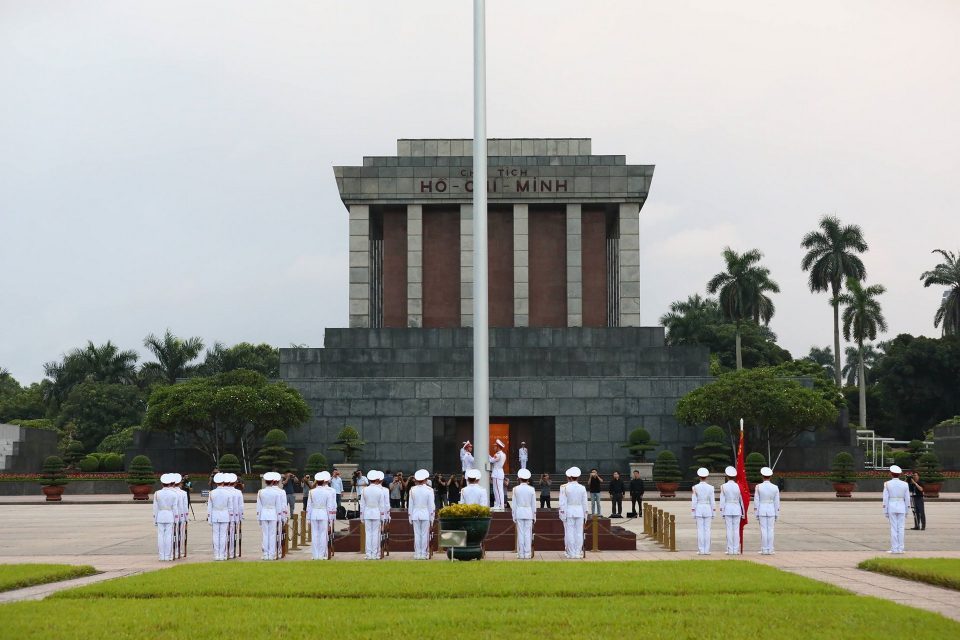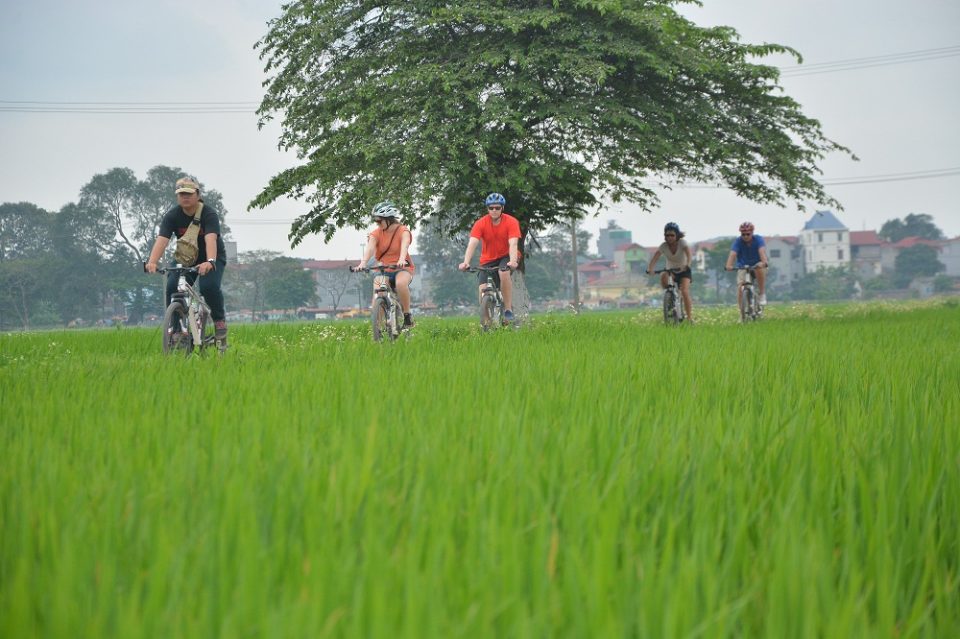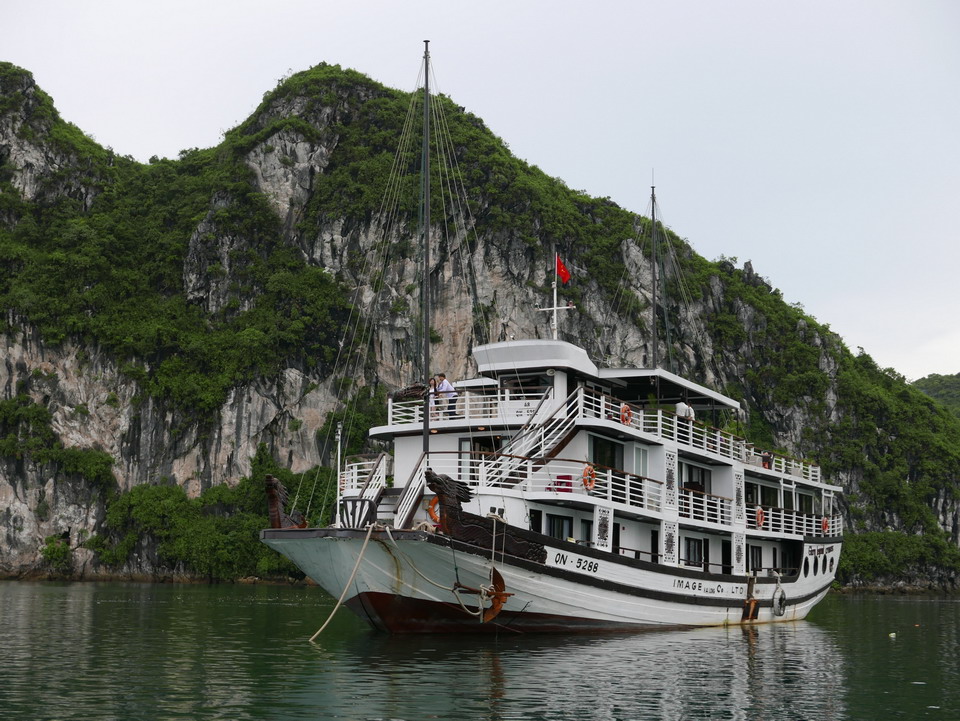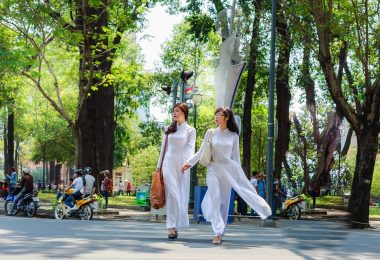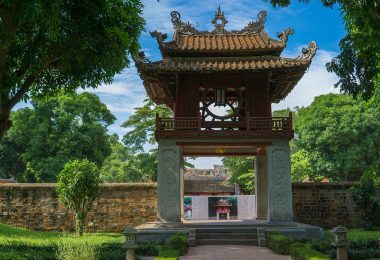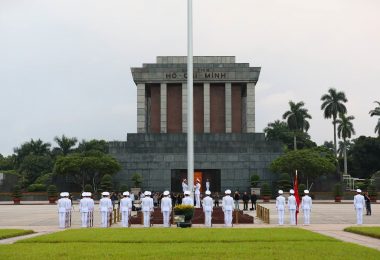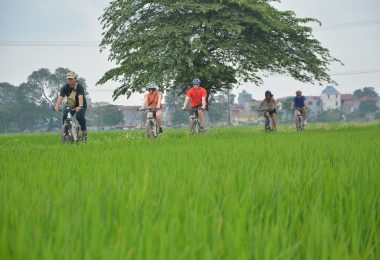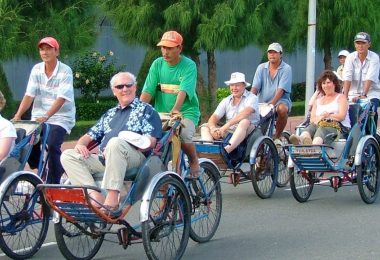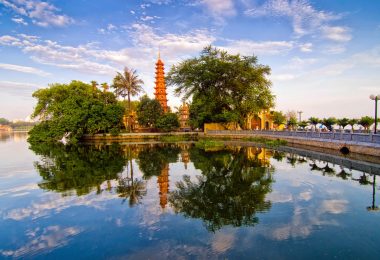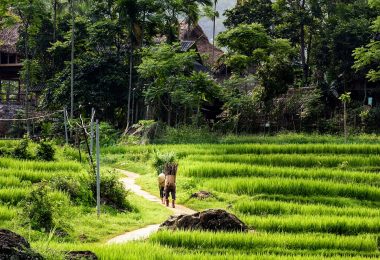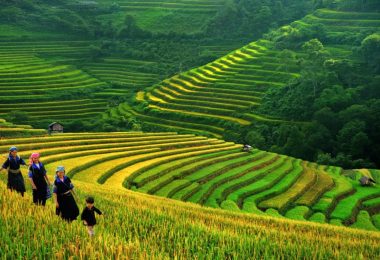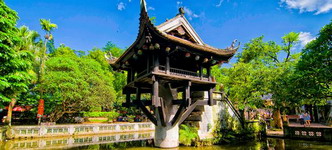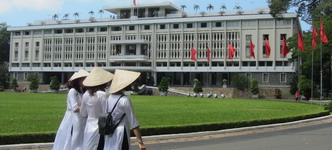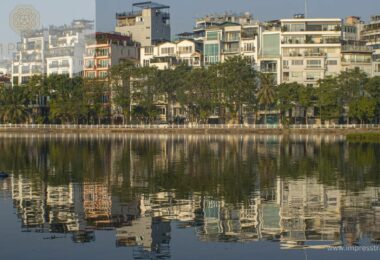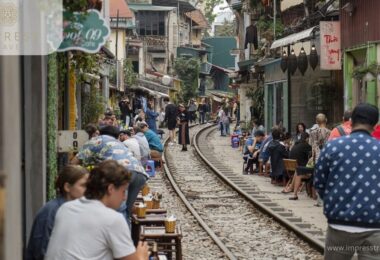Hanoi, the capital of Vietnam, is renowned for its historical charm, vibrant street life, and unique culinary scene. However, one of the most defining features of this bustling city is its motorbike culture. Motorbike is more than just a means of transportation in Hanoi—they are a way of life. This comprehensive cultural tour delves into the history of motorbike culture in Hanoi, its role in daily life, the chaotic traffic it creates, its economic impact, and the environmental concerns it raises.
History of Motorbike Culture
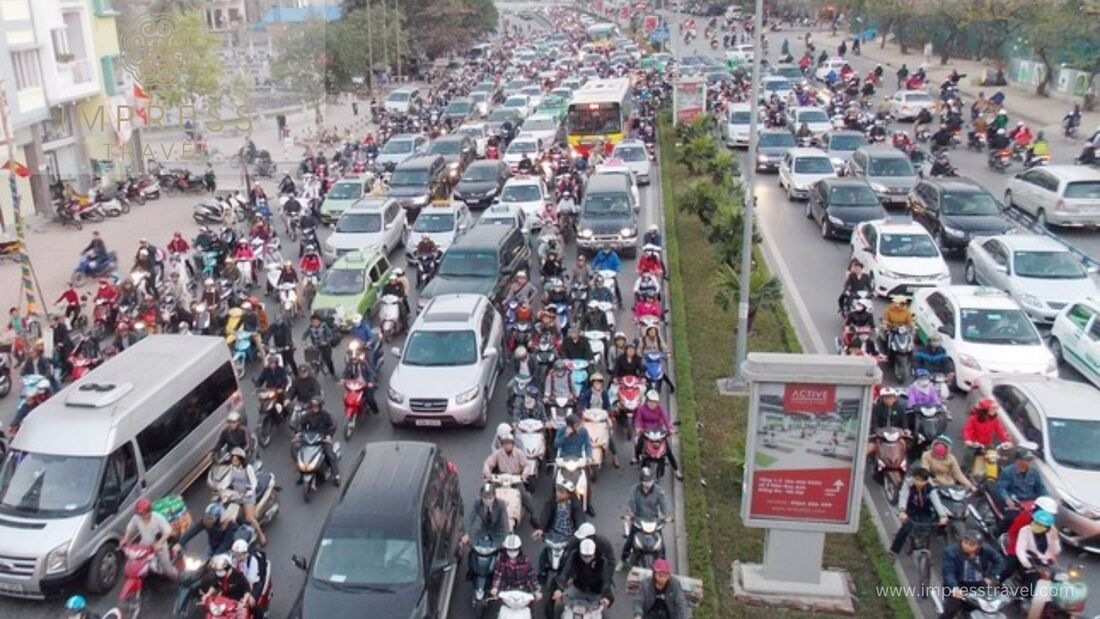
Ancestor altar of Hanoi people
-
The Early Days
-
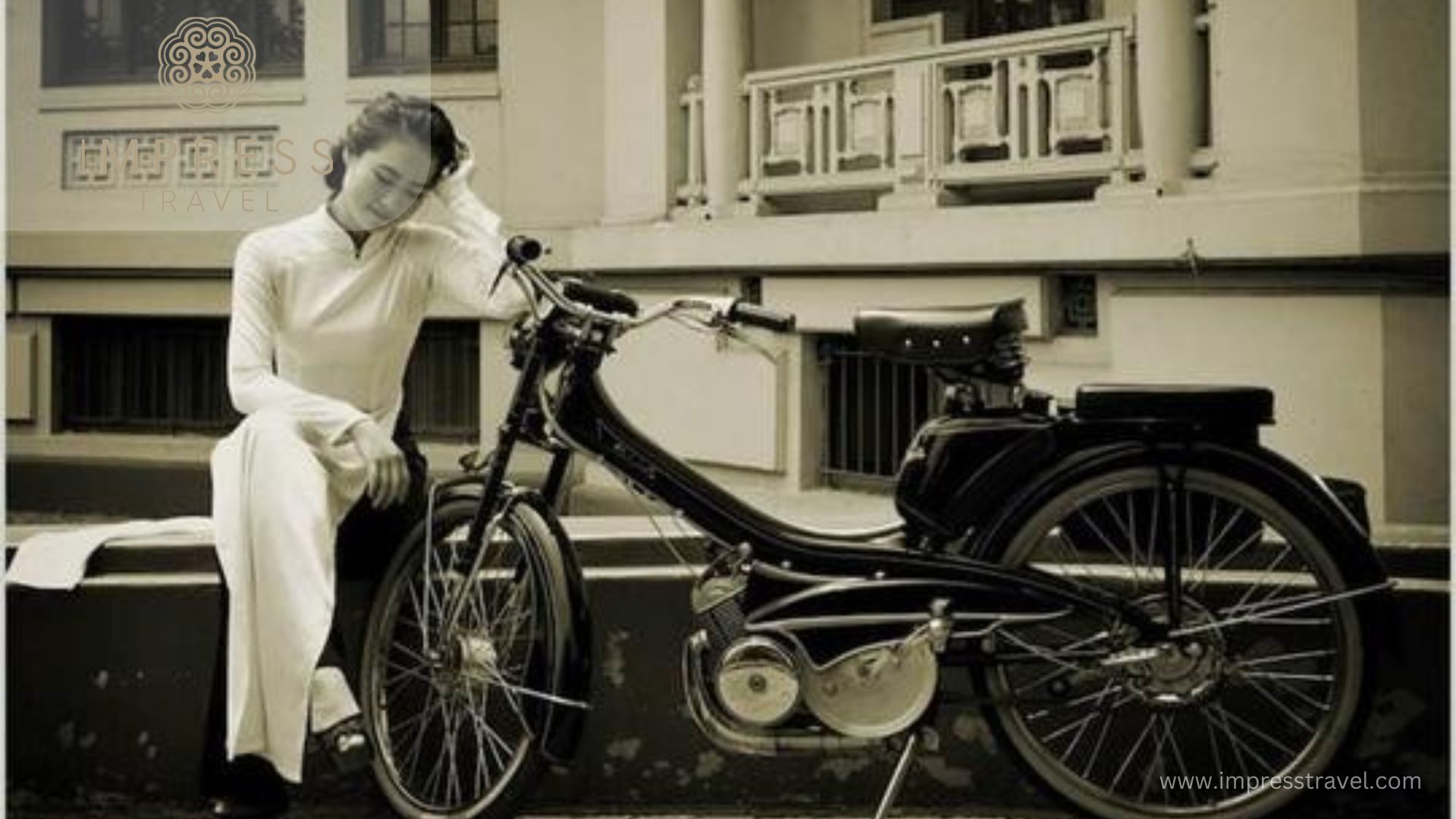
Motobecan motorcycle in 1930
Motorbikes made their debut in Vietnam during the French colonial period, which lasted from the mid-19th century until 1954. Initially, these early models were seen as a luxury item, accessible only to the affluent French colonialists and a small number of wealthy Vietnamese. The presence of motorbikes on the streets of Hanoi served as a stark symbol of status and modernity, setting the riders apart from the masses who relied on bicycles, rickshaws, and walking for their daily transportation needs.
-
Post-War Era and Economic Reforms
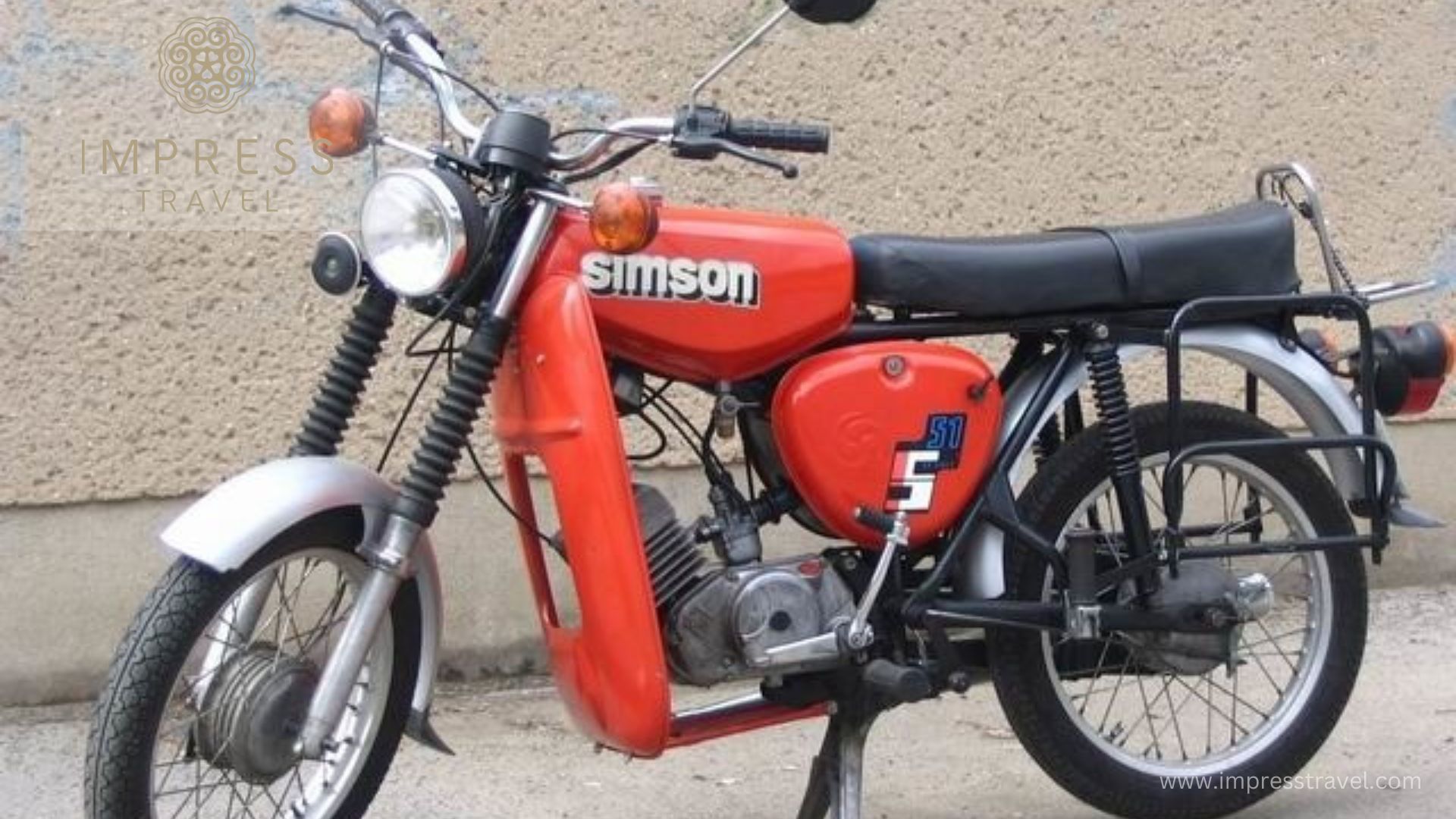
Simson S51 (Kich) in 1970-1990
The end of the Vietnam War in 1975 ushered in a period of significant economic hardship and reconstruction for the country. Hanoi, like much of Vietnam, faced immense challenges in rebuilding its infrastructure and economy. During these years, bicycles remained the primary mode of transportation for most people, as motorbikes were still relatively scarce and expensive. The city’s streets were dominated by the sight of people peddling their way through daily life, a testament to the resilience and resourcefulness of its inhabitants.
However, a pivotal moment came in the mid-1980s with the introduction of the Đổi Mới (Renovation) economic reforms. These reforms aimed to transition Vietnam from a centrally planned economy to a socialist-oriented market economy, spurring economic growth and significantly improving living standards. One of the most visible and immediate signs of this transformation was the rapid proliferation of motorbikes. As the economy opened up and disposable incomes began to rise, motorbikes became more affordable and accessible to the general population.
By the 1990s, motorbikes had firmly established themselves as the preferred mode of transportation for many Hanoians. They offered a level of convenience and efficiency that bicycles could not match, especially in a rapidly urbanizing environment. The streets of Hanoi, once dominated by bicycles and a few motorbikes, were now filled with the buzz of countless two-wheelers. This shift not only transformed the daily lives of the city’s residents but also marked a broader socio-economic change in Vietnam, reflecting the country’s growing integration into the global economy.
-
Modern-Day Proliferation
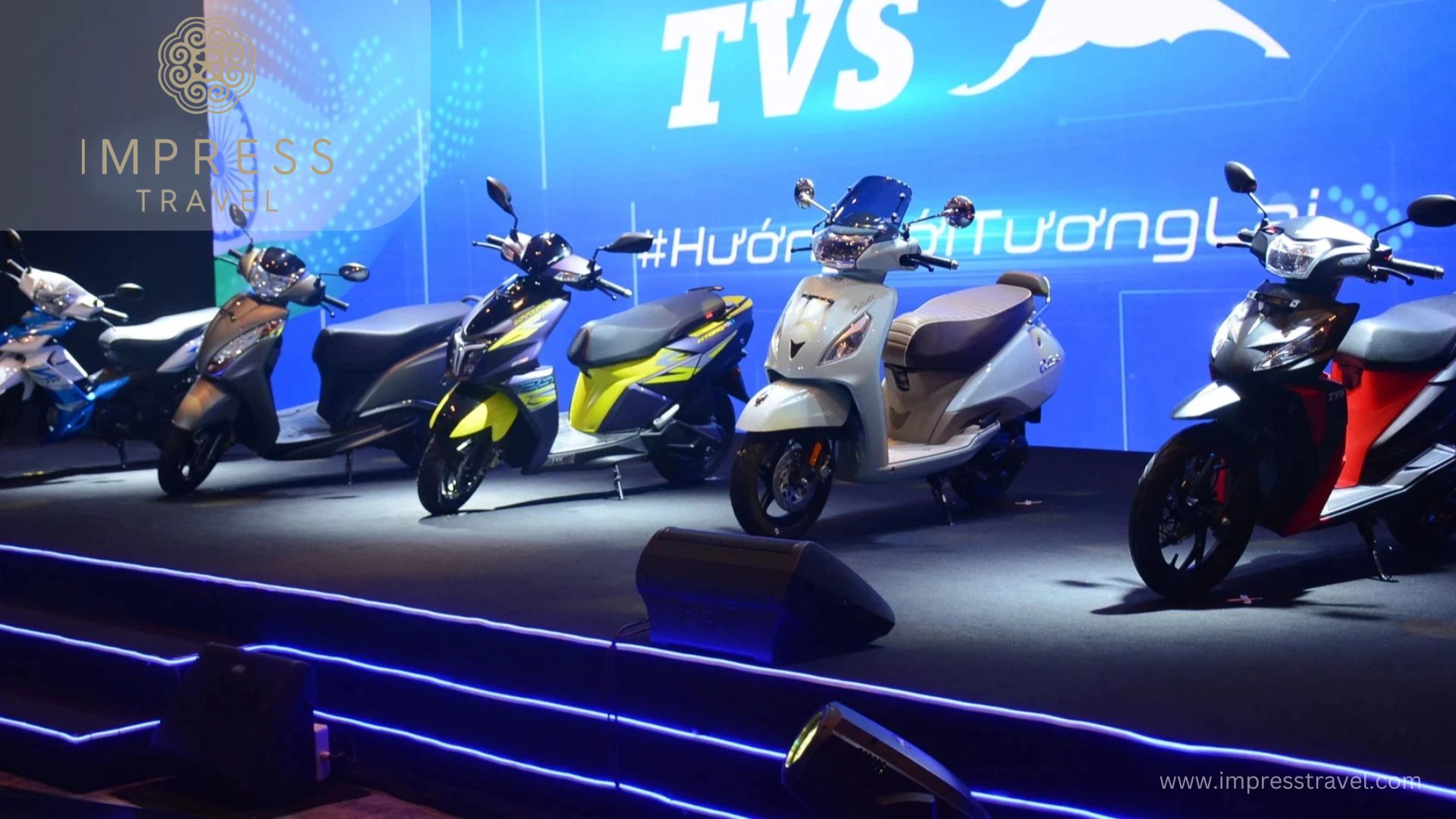
6 Newest scooter models in Vietnam
Today, motorbikes are an inseparable part of Hanoi’s urban fabric. The city’s narrow streets and alleys, often too cramped for cars and buses, are perfectly suited for motorbikes. It is estimated that there are millions of motorbikes navigating the streets of Hanoi on any given day, creating a dynamic and, at times, chaotic urban landscape. This dense network of motorbikes forms the lifeblood of the city’s transportation system, facilitating everything from daily commutes to the delivery of goods and services.
The evolution of motorbikes from luxury items to everyday necessities reflects broader socio-economic changes in Vietnam over the past few decades. In modern Hanoi, motorbikes are more than just a mode of transport—they are an essential tool for commerce, a symbol of personal freedom, and a key to navigating the complexities of urban life. For many Hanoians, the motorbike is a versatile vehicle that can weave through traffic jams, access narrow alleyways, and provide a sense of autonomy and mobility.
Daily Life and Motorbikes

Motorbikes in Hanoi
-
A Day in the Life
-

Motorbikes with Hanoi people
In Hanoi, motorbikes are an integral part of daily life, embodying the city’s rhythm and pace. From the early hours of the morning, the streets come alive with the hum of engines as thousands of motorbikes flood the roads. The city awakens with a flurry of activity, with people of all ages and backgrounds setting out on their daily journeys.
For many Hanoians, the day begins with a motorbike ride. Students don their uniforms and hop on their parents’ motorbikes for the ride to school. Office workers navigate through the morning traffic, often stopping by their favorite street vendors for a quick breakfast of pho or banh mi. The motorbike is a versatile tool, capable of carrying not just people but also a surprising array of goods. It’s not unusual to see motorbikes loaded with everything from towering stacks of vegetables to building materials.
Throughout the day, motorbikes continue to play a crucial role in the city’s dynamics. Delivery drivers weave through traffic, ensuring that packages and food orders reach their destinations promptly.
As evening falls, the streets remain busy with motorbikes. Workers head home, students return from extra classes, and the nightlife begins to stir. Motorbikes crowd the parking lots of restaurants and cafes, where people gather to unwind and socialize. Late into the night, the sound of motorbike engines continues to echo through the streets, a testament to the city’s ceaseless energy.
-
Social and Cultural Significance
-
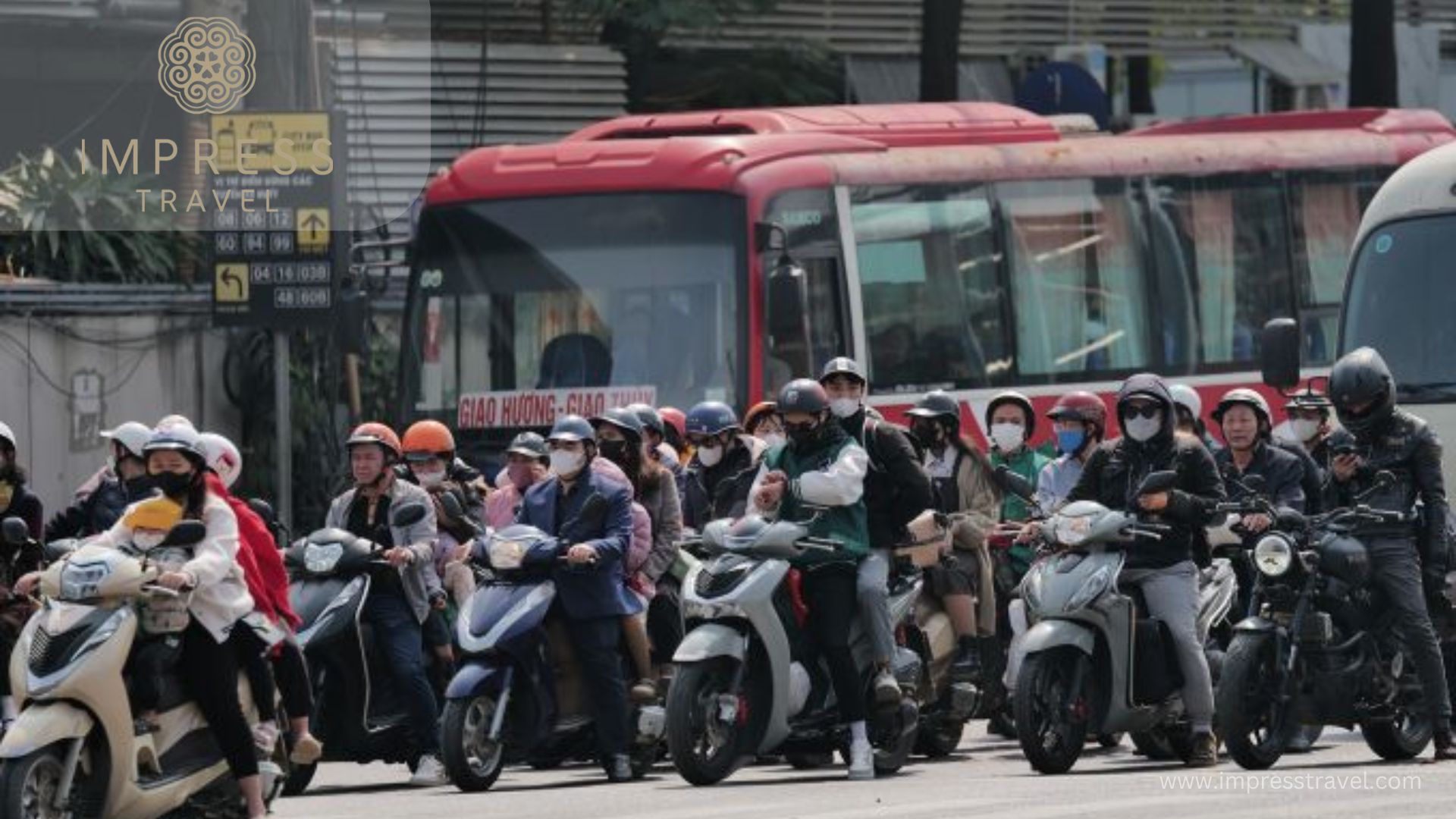
Motorbikes are an integral part of daily life
Motorbikes hold a special place in Hanoi’s social and cultural fabric. They are not just vehicles; they are extensions of personal space and platforms for social interaction. In Hanoi, it is common to see groups of friends meeting at cafes, their motorbikes parked in front, as they catch up over coffee or tea. Motorbikes often serve as impromptu seating for street food vendors and their customers, creating a vibrant and dynamic street culture.
In the realm of family life, motorbikes play a crucial role. They are used to take children to school, run errands, and visit relatives. It is not uncommon to see entire families—sometimes three or four members—riding on a single motorbike, showcasing the vehicle’s adaptability and central place in family routines. It is featured in countless photographs, films, and stories that capture the essence of the city’s bustling streets and dynamic lifestyle. The motorbike’s presence in these cultural representations underscores its significance as more than just a mode of transport; it is a symbol of Hanoi’s resilience, adaptability, and forward momentum.
Traffic and Chaos

Rush hour traffic and chaos
-
The Organized Chaos
-

Organized chaos at intersections
One of the most striking aspects of Hanoi’s motorbike culture is the chaotic traffic. At first glance, the traffic appears to be a tangled mess, with motorbikes, cars, bicycles, and pedestrians all vying for space. However, there is a method to this madness. Local residents navigate the streets with an intuitive understanding of unspoken rules. They honk their horns to signal their presence, use hand gestures to communicate their intentions, and maneuver through tight spaces with remarkable skill.
For outsiders, Hanoi’s traffic can be overwhelming and intimidating. Crossing the street requires a leap of faith and a steady nerve. However, for Hanoians, this traffic is a part of daily life, a dance of sorts that they perform with practiced ease.
-
Traffic Jams and Solutions
-
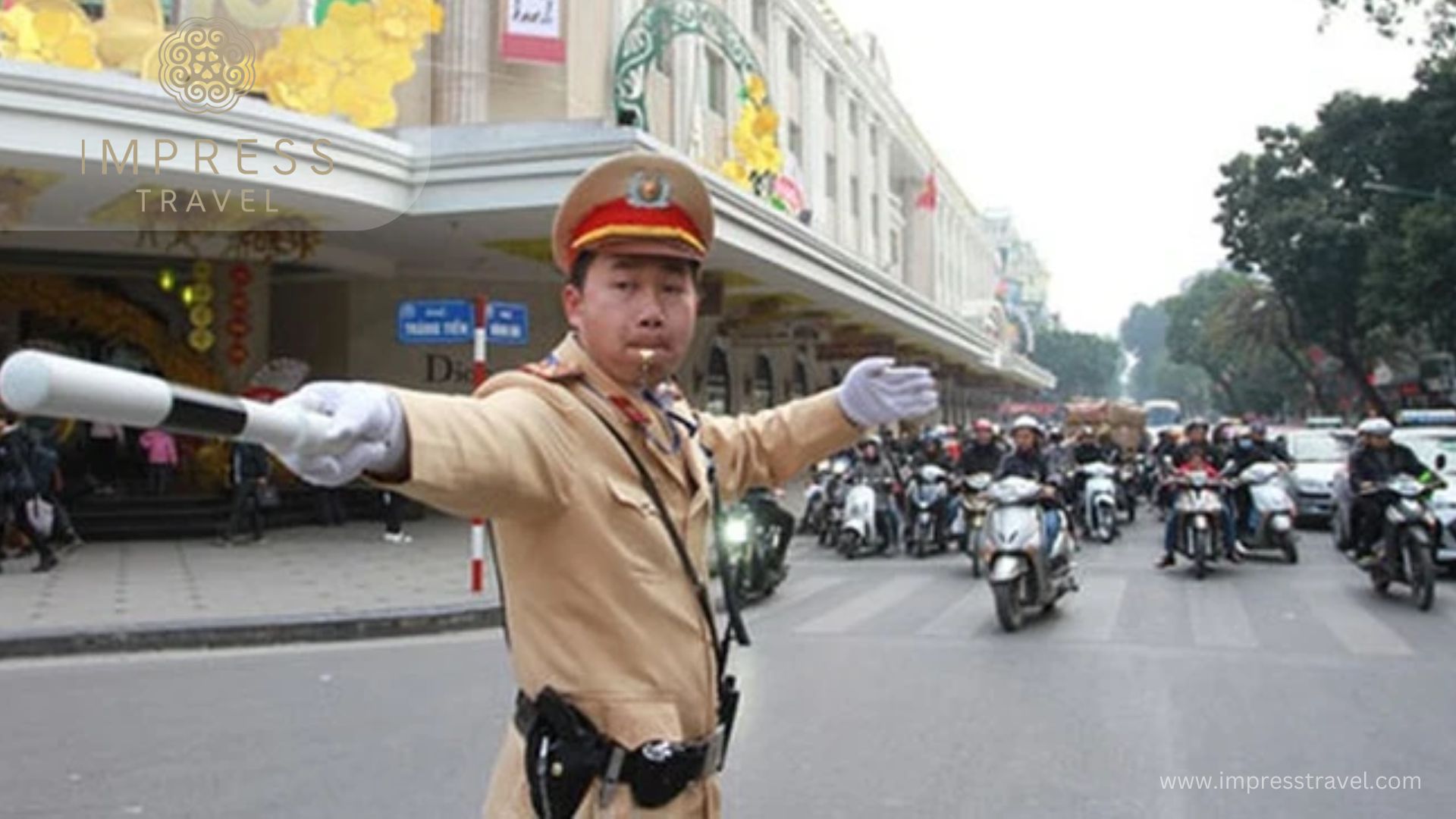
Traffic police direct traffic
Despite the apparent chaos, Hanoi’s traffic system faces significant challenges. The sheer volume of motorbikes leads to frequent traffic jams, especially during peak hours. The narrow streets and limited infrastructure struggle to accommodate the growing number of vehicles.
The government has implemented various measures to alleviate congestion and improve traffic flow. These include building new roads and bridges, implementing stricter traffic laws, and promoting the use of public transportation. However, these efforts often fall short, and traffic remains a persistent issue.
Economic Impact

Motorbikes are an integral part of daily life
-
Affordable and Efficient
-
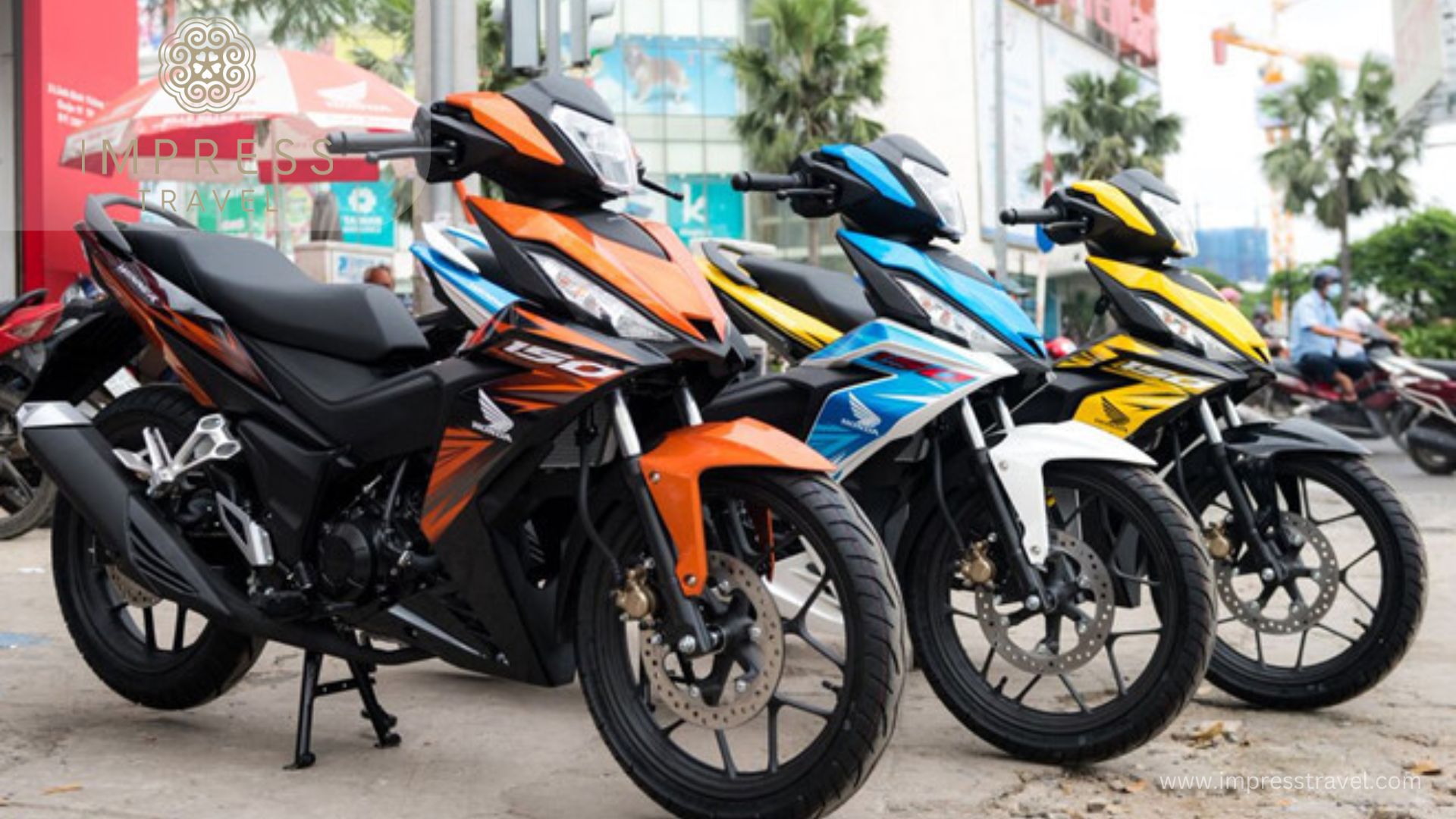
In Vietnam, motorbikes are still the main vehicle in all income groups
Motorbikes are relatively affordable and economical to run, making them the preferred choice for many Hanoians. They consume less fuel compared to cars and are easier to maintain. This affordability is crucial in a city where the average income remains relatively low, allowing people from various economic backgrounds to own a vehicle.
Motorbikes also offer significant time savings. They can navigate narrow alleys and bypass traffic jams more easily than cars, making them a practical choice for daily commutes and errands. This efficiency contributes to their popularity and widespread use.
-
Employment and Industry
-
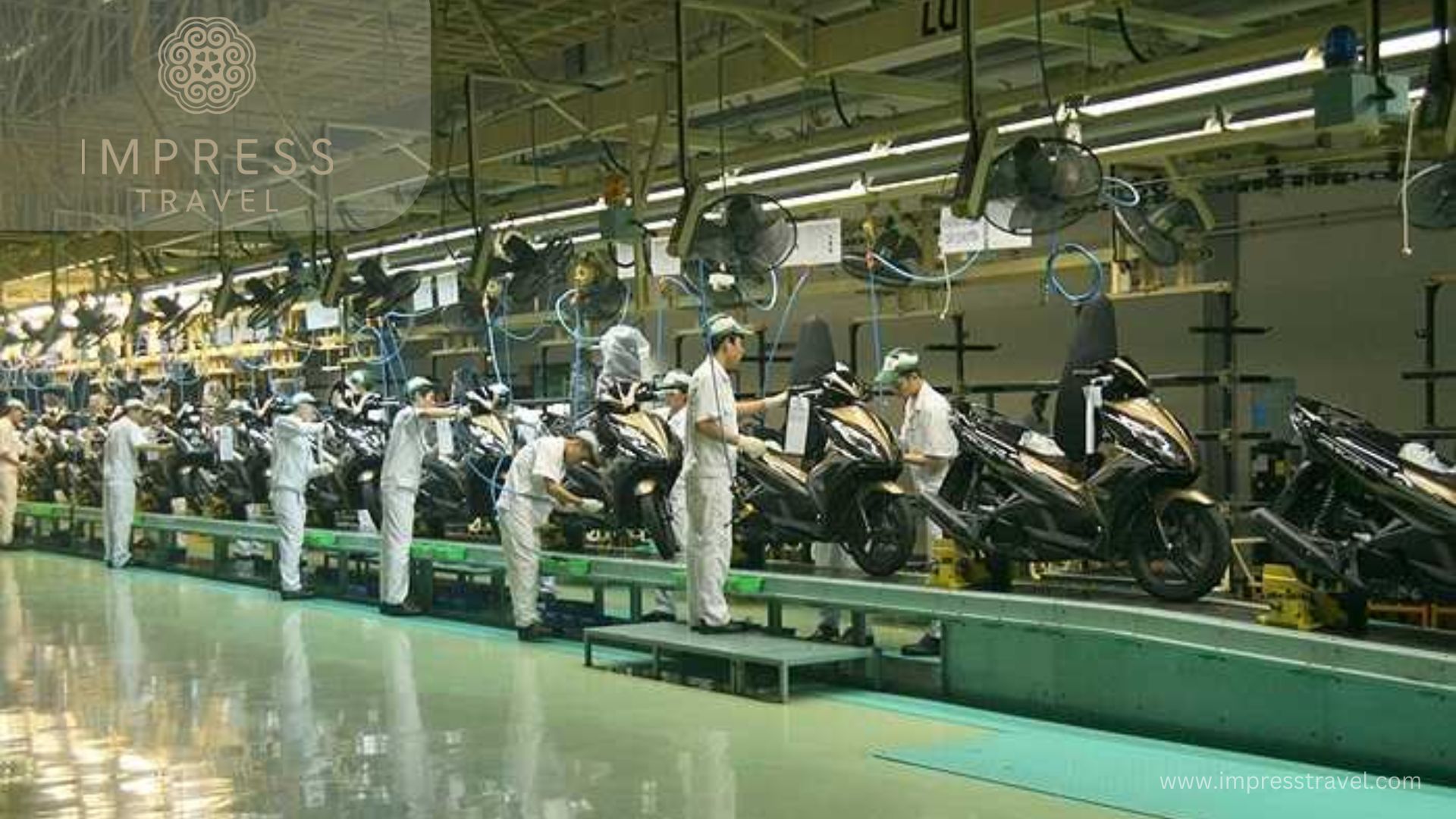
Motorcycle manufacturer
The motorbike industry is a significant contributor to the local economy. From manufacturing and sales to repair shops and aftermarket accessories, countless businesses thrive on the motorbike culture. Major international brands like Honda, Yamaha, and Piaggio have established manufacturing plants in Vietnam, creating jobs and boosting the economy.
In addition to the formal sector, the motorbike culture supports a vast informal economy. Street vendors, delivery drivers, and freelance motorbike taxi operators all rely on motorbikes for their livelihoods. These activities provide income for many people and add to the vibrancy of Hanoi’s street life.
Environmental Concerns
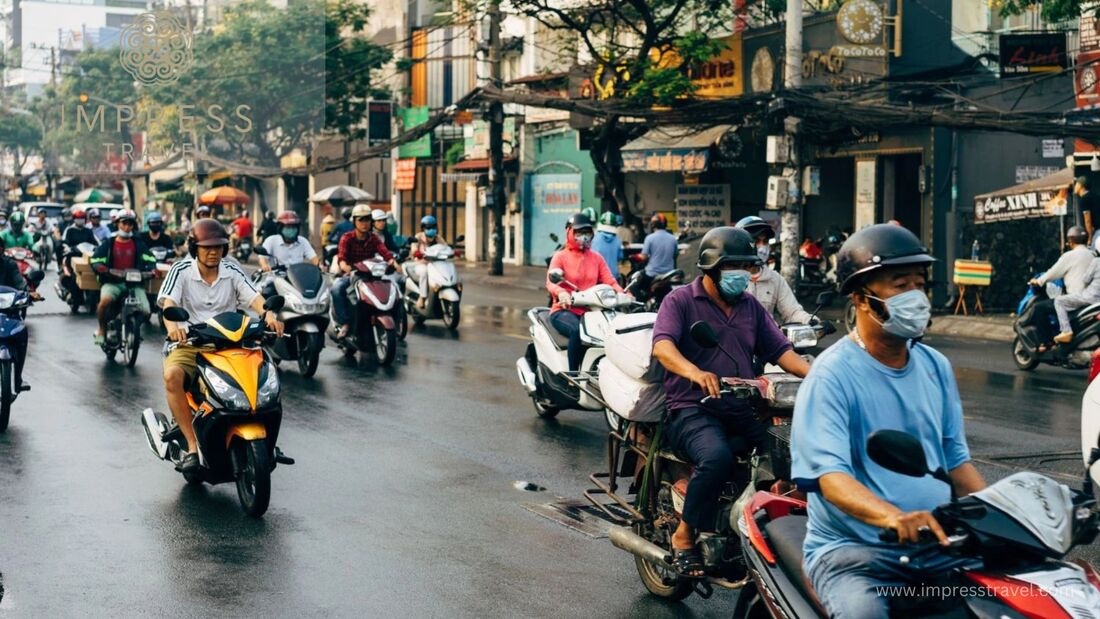
Motorbikes in Hanoi
-
Pollution and Health Risks
-
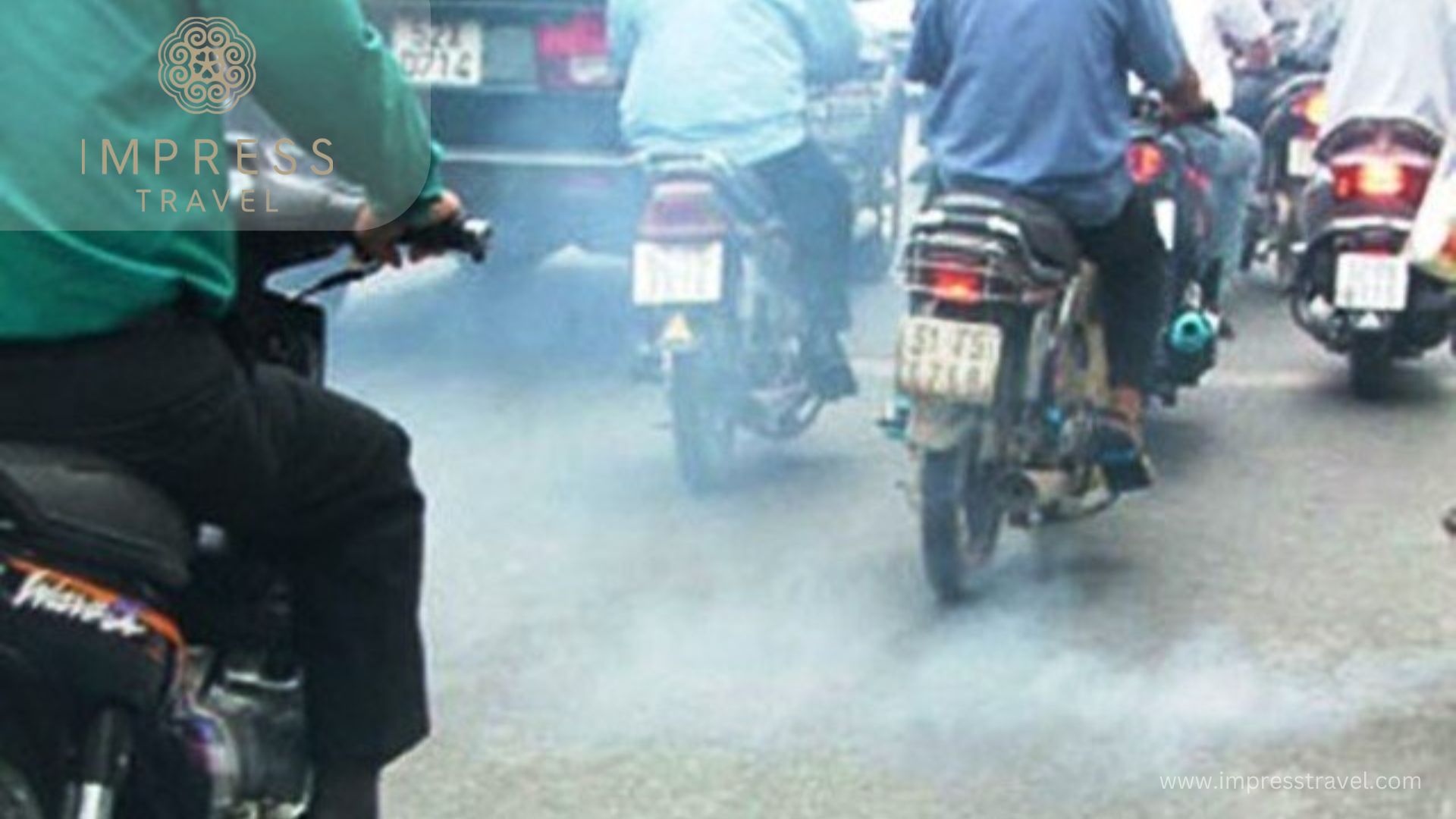
Pollution due to exhaust fumes from traffic
The downside of Hanoi’s motorbike culture is its environmental impact. The large number of motorbikes contributes to significant air pollution. Emissions from motorbikes, particularly older models with two-stroke engines, release harmful pollutants into the air. These pollutants include carbon monoxide, nitrogen oxides, and particulate matter, which pose serious health risks.
Air pollution is a major concern in Hanoi, leading to respiratory problems, cardiovascular diseases, and other health issues. The dense traffic also generates high levels of noise pollution, contributing to urban stress and affecting the quality of life.
-
Efforts Towards Sustainability
-
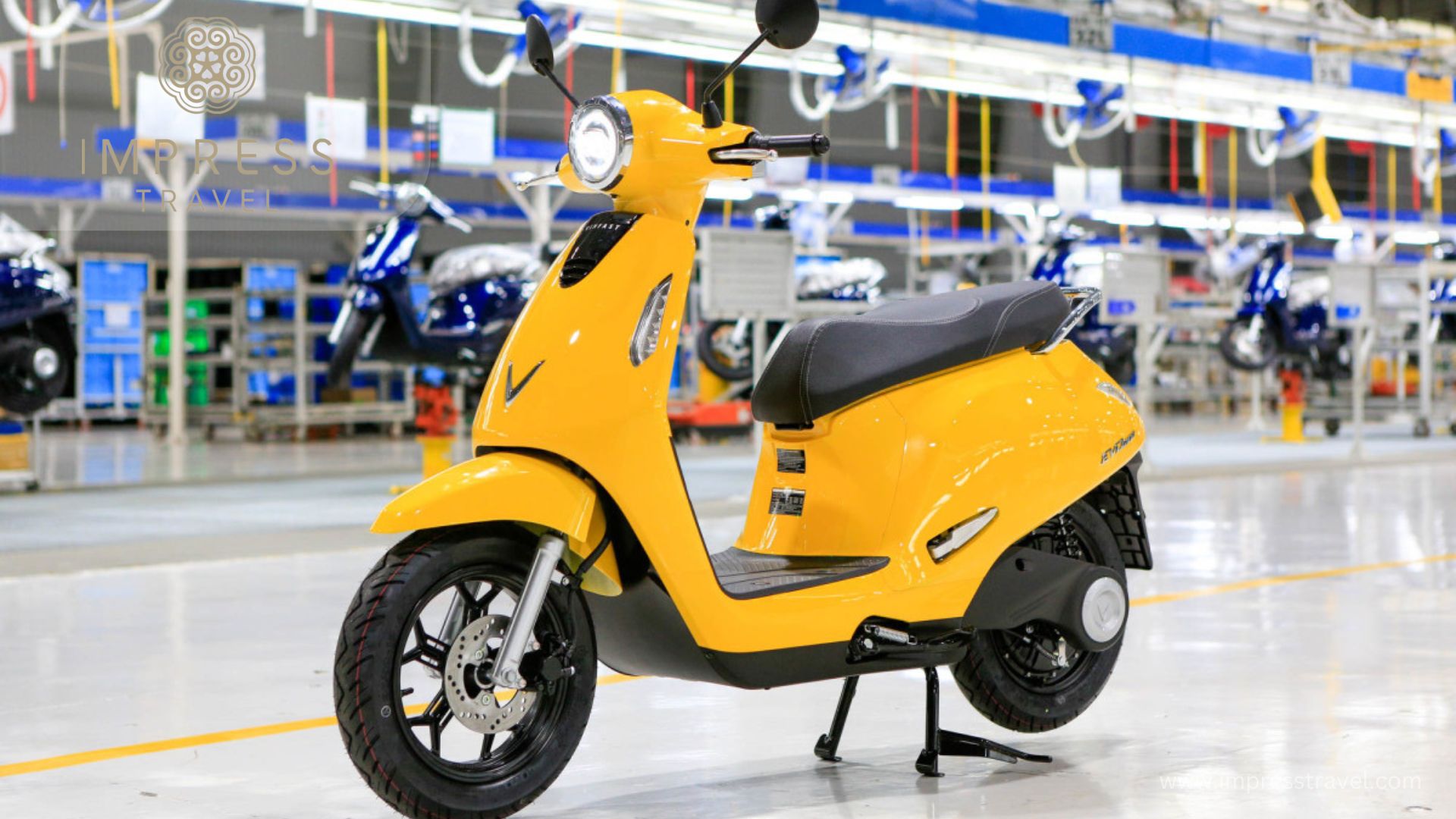
Electric motorbike
In recent years, there has been a growing awareness of the need for more sustainable transportation solutions. The government and various organizations are promoting the use of electric motorbikes as a cleaner alternative to traditional petrol-powered models. Electric motorbikes produce zero emissions and are quieter, reducing both air and noise pollution.
Efforts are also underway to improve public transportation infrastructure. The expansion of bus routes and the construction of a metro system aim to provide viable alternatives to motorbikes, reducing the overall number of vehicles on the road.
Initiatives to encourage walking and cycling are also gaining traction. Creating pedestrian-friendly areas and dedicated bike lanes can help reduce the reliance on motorbikes and promote healthier, more sustainable modes of transportation.
Understanding Hanoi’s motorbike culture provides valuable insights into the broader dynamics of urban life in the city. It highlights the resilience and adaptability of Hanoians, their ability to navigate the complexities of urbanization, and their commitment to preserving the unique character of their city amidst rapid change. As Hanoi continues to evolve, its motorbike culture will undoubtedly remain a defining feature, reflecting both the vibrancy and the challenges of this dynamic metropolis.
Don’t forget to regularly follow our Facebook page and Website for more interesting information about traveling to Hanoi and to book Hanoi tours at the best prices.
Website: https://impresstravel.com/hanoi-tours/
Facebook: https://www.facebook.com/impresstravelcompany/















































